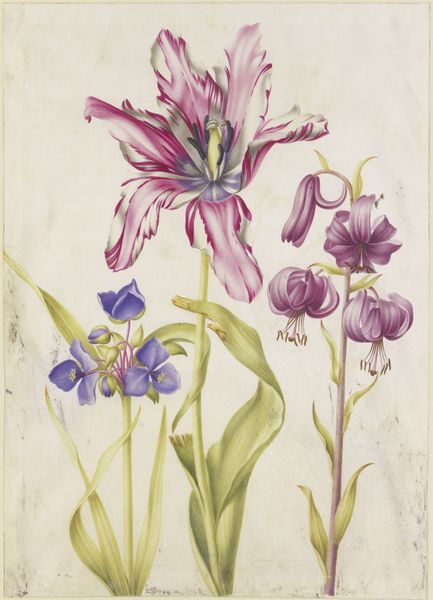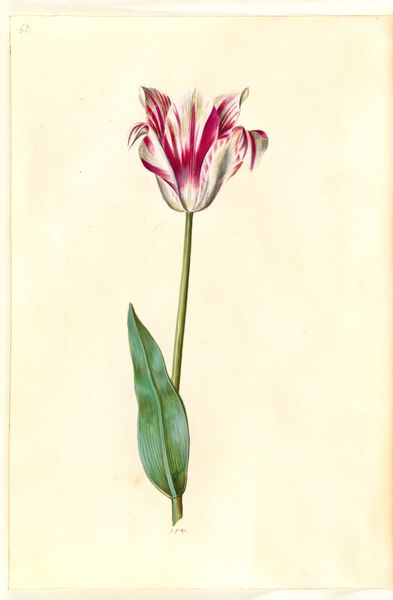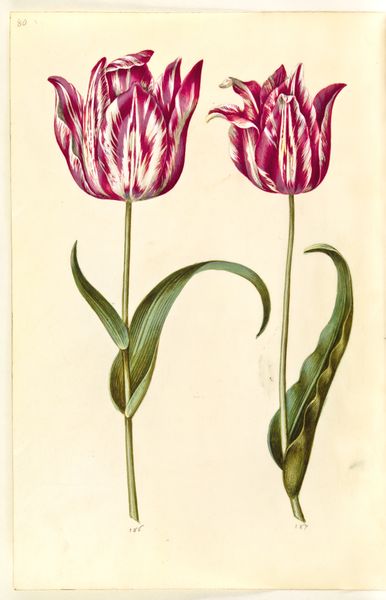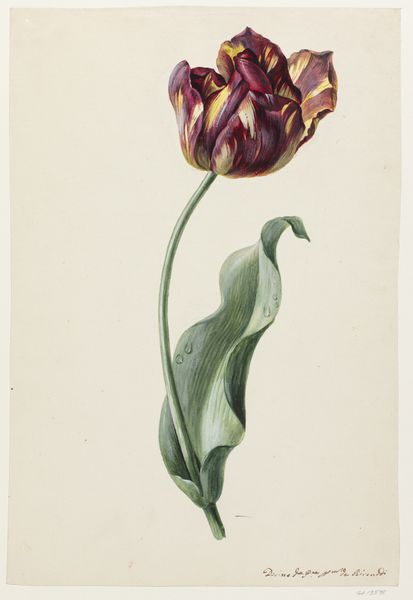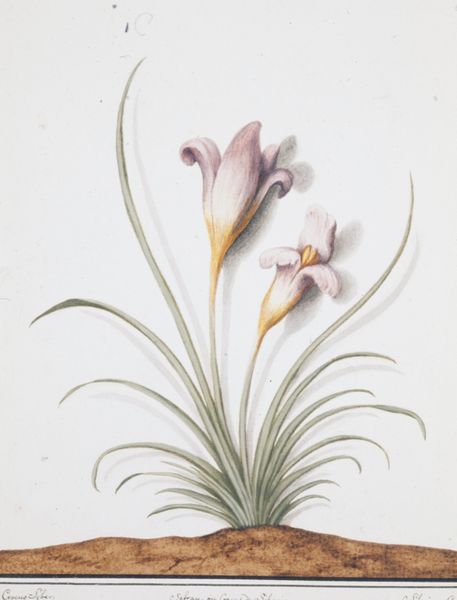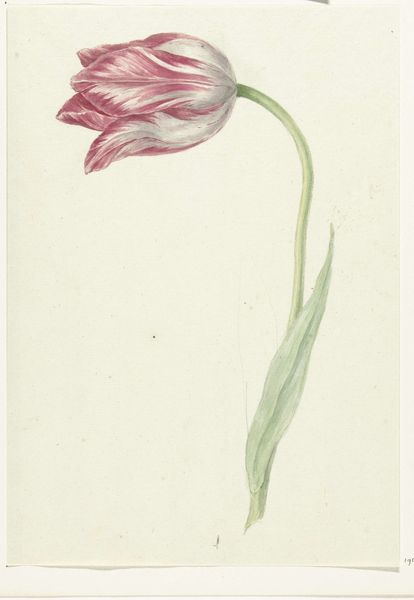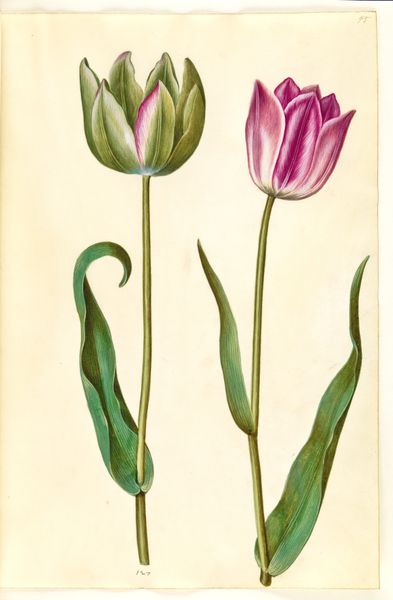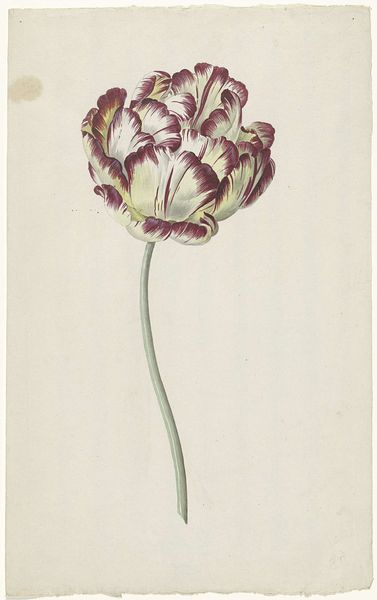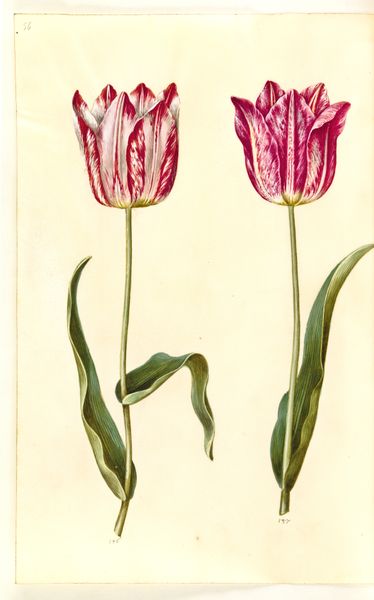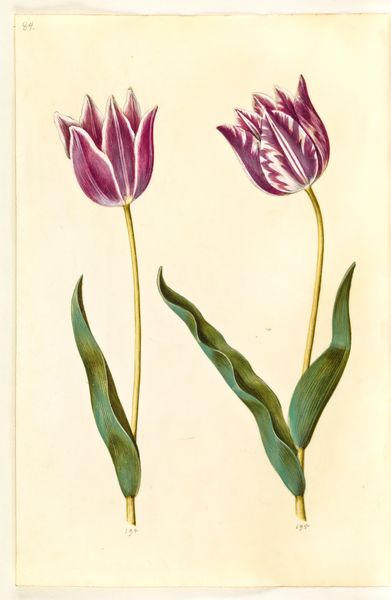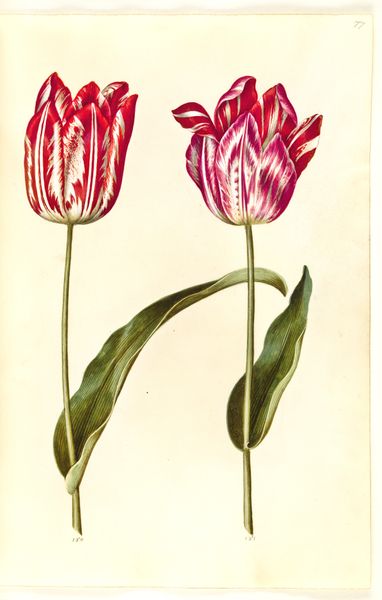
drawing, painting, watercolor
#
drawing
#
painting
#
watercolor
#
realism
Dimensions: 11 1/4 x 5 1/4 in. (28.58 x 13.34 cm) (image)12 3/4 x 8 11/16 in. (32.39 x 22.07 cm) (sheet)
Copyright: Public Domain
Josepha Tusch painted this watercolor of a Didier's Tulip around 1810, using delicate washes of pigment on paper. The controlled application of watercolor allows for subtle gradations of tone, capturing the velvety texture of the petals and the gentle curve of the stem. Look closely, and you can see the stippling effect she created with tiny brushstrokes to build up the color and form. This wasn’t just art; it was a form of documentation, feeding the burgeoning scientific interest in botany. Tulip mania had swept through Europe a century before, driven by speculation and desire. While that frenzy had passed, the tulip remained a potent symbol of luxury and refinement. Tusch's painting, with its meticulous detail, reflects this cultural value, transforming the flower into an object of both scientific study and aesthetic pleasure. Ultimately, appreciating this watercolor is not just about admiring the image, but about recognizing the social and economic forces that shaped both its creation and reception.
Comments
minneapolisinstituteofart almost 2 years ago
⋮
Botanical illustrators working in the fifteenth and sixteenth centuries devoted themselves to the medicinal qualities of plants and sought to render plant structure and function as precisely as they could. Later, European explorers brought specimens back from exotic locales, and artists carefully reproduced them for an audience fascinated by new discoveries. By the eighteenth and nineteenth centuries, artists had shifted their emphasis from scientific illustration to the innate beauty of the plant or flower. The Minneapolis Institute of Arts is fortunate to possess an impressive collection of more than 2,000 botanical prints and drawings.
Join the conversation
Join millions of artists and users on Artera today and experience the ultimate creative platform.
